"Midrash" by George Barany (March 31, 2014)
Overview and Theme
My brother, FRANCIS_BARANY (111-Across), will turn 57 on April 4. However, the true inspiration for this puzzle came when I realized that March 31 (the day before April Fools') will mark the 40th anniversary of that SUNDAY (13-Across) (Figure 1) when Francis's smiling face graced the cover (Figure 2) of the New York Times (81-Down) magazine in this article by Ted MORGAN (117-Across), who is a fascinating person in his own right as indicated by his linked biography, as well as by the clues for 22-Across and 117-Across. The other name in the puzzle that you may (or may not) recognize is ERIC LANDER (88-Across), Francis's STUYVESANT (39-Across) High School Math Team-mate [see Figure 3; and I'll bet anything they were both in ARISTA (26-Across; we all were], who in addition to winning the Westinghouse Science Talent Search in 1974 (Figure 4), got a 1987 MacArthur "genius" fellowship, was one of the leaders of the human genome project, and is the founding director of the Broad Institute of MIT/Harvard [Eric was encouraged to switch from mathematics and business to biology by his younger brother Arthur, himself an eminent scientist].
This puzzle is dedicated to the memories of our parents, Kate and Michael Bárány (more about them below). Dad's Ph.D. mentor, F.B. STRAUB (55-Down), after whom my brother was named [this is not the place to get into the nuances of how names work in Hungarian], also appears in the puzzle.
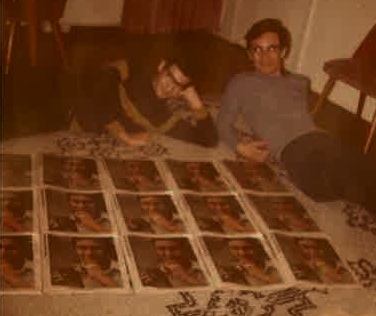
Figure 1. The afternoon of Sunday, March 31, 1974.
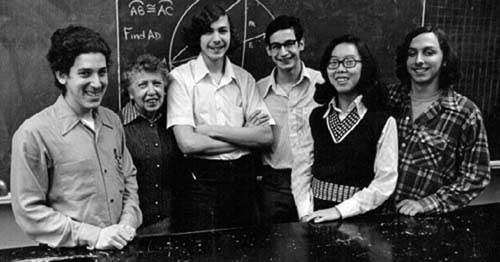
Figure 3. Stuyvesant High School Math Team, Spring 1974. From left to right, Jesse Deutsch, Mrs. Irene Finkel, Eric Lander, Francis Barany, Kelly Pan, Paul Zeitz. Note that Eric was the 1974 Westinghouse Science Talent Search winner, and Paul won the following year.
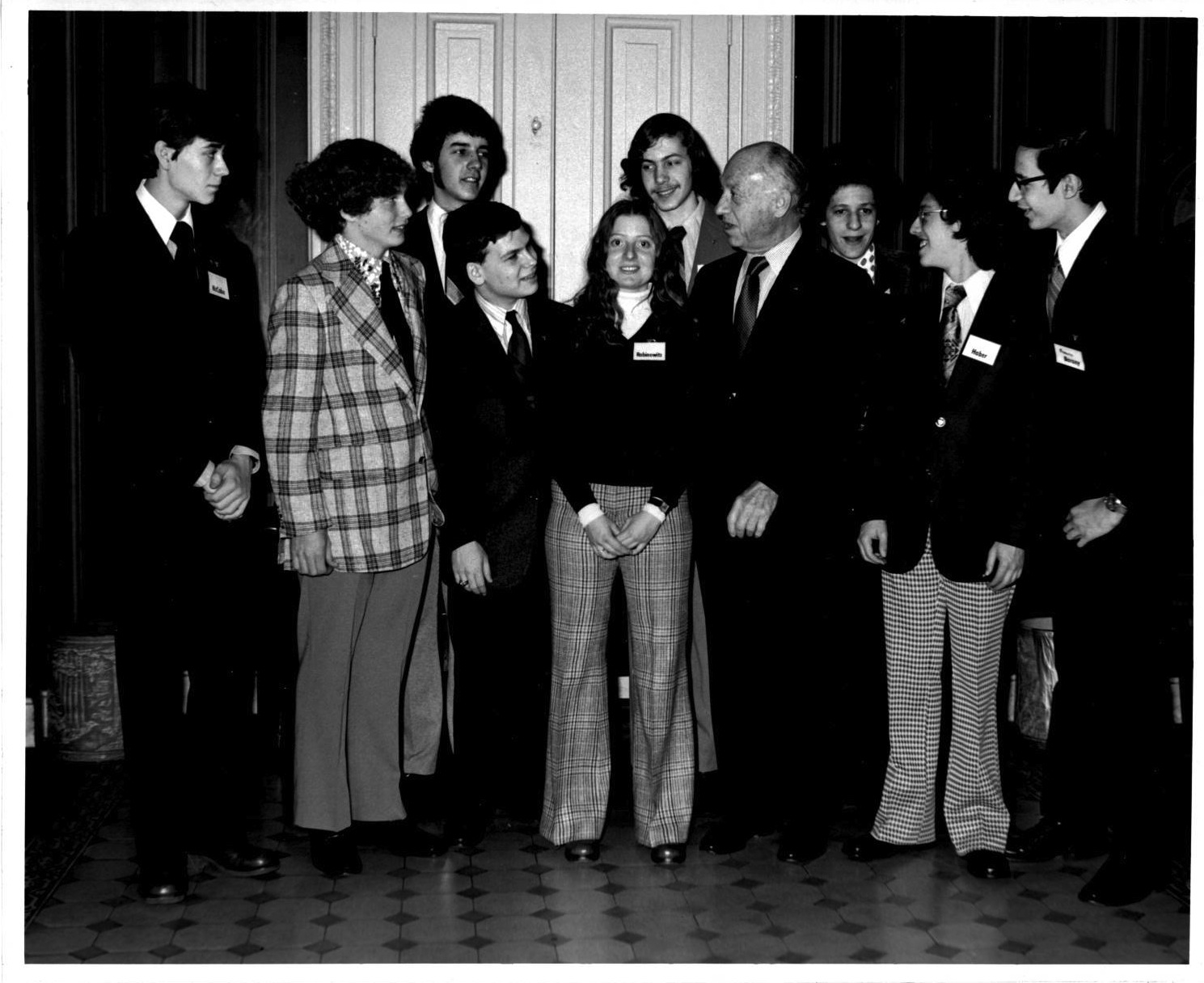
Figure 4. My best guess is that this picture shows the 1974 New York contingent of Westinghouse finalists meeting Senator Jacob Javits (R-NY). Eric Lander is in the back row behind the Senator's right shoulder, and Francis is on the far right of the photo.
Puzzle Authorship and Related Puzzles
A tricky problem occasionally encountered with puzzles is how to give a byline when the puzzle's constructor is related (actually related and/or has a similar name) to the puzzle's honoree. Click here, here, here and here for representative examples, from many on my website, and here for a recent (and perhaps the only?) New York Times example. For the present puzzle, I solved the problem by calling myself "Big Brother"—meant to be evocative not of the ridiculous reality TV franchise, but of the classic dystopian (and now in the rear-view mirror) 1949 novel 1984, and its author George Orwell (itself a pseudonym for Eric Blair). Then, to represent the All-Star group of Barany Friends who helped vet the puzzle, I chose the moniker "Holding Company" because it reminded me of Janis Joplin's band. Click here, here and here if you want to listen to some of their most iconic songs. I close this section by noting [spoilers to a number of puzzles linked to in the rest of this sentence] that while Francis's name is in common with the popular current Pope, my name is shared not only with the last-in-the-line giant tortoise of the Galapagos Islands, but also with a (likely) future ruler of the British Empire.
Darwin and Venus flytraps
As you know by having read this far (and by having looked at some of the earlier links, including Ted Morgan's magazine article), Francis's science fair project was about the Venus flytrap carnivorous plants. Immediately after the great English naturalist Charles Darwin had published On the Origin of Species (1859), which set forth the principles of evolution and natural selection, he became interested in carnivorous plants.
What names did Darwin select for his second and third sons? Yep, George and Francis. Moreover, they collaborated with him Insectivorous Plants (1875) (see second paragraph of the link to the left). Amazin'!
For completeness, we link here, here, and here to several articles from the recent scientific literature, found by our good friend Jed Fisher, from which you can decide how much of the work of a mature Charles Darwin—and of a high school-age Francis Barany—has stood the test of time.
Backstory of the Magazine Article
Truth be told, 1974 was a stressful time for the Barany family. The Institute for Muscle Disease on East 72nd Street, where our parents had worked since 1960, was in the process of being closed due to a personal dispute between Jerry Lewis and the Institute's Director. Our father was in the process of rebooting his professional career at the University of Illinois-Chicago Medical College, while our mother wanted very much to stay in New York City. I was putzing along as a graduate student at The Rockefeller University, under a media blackout. Some editor at the New York Times saw the Westinghouse press release, noted how many of the 40 national finalists were living in the city, and assigned Pulitzer Prize-winning journalist Ted Morgan to interview several of them in order to write a perspective on high-performance high school students. By his own admission, Morgan was lazy: Our upper East side apartment building (First Avenue between 75th and 76th Streets) was in walking distance from his own home, and once he had spoken to Francis, he repurposed the story to make it a profile solely of our family. The Times ran a teaser mid-week, which made the Rockefeller Dean go into conniptions, until we were able to convince him that my part in the article was peripheral to its focus on Francis and his Westinghouse project.
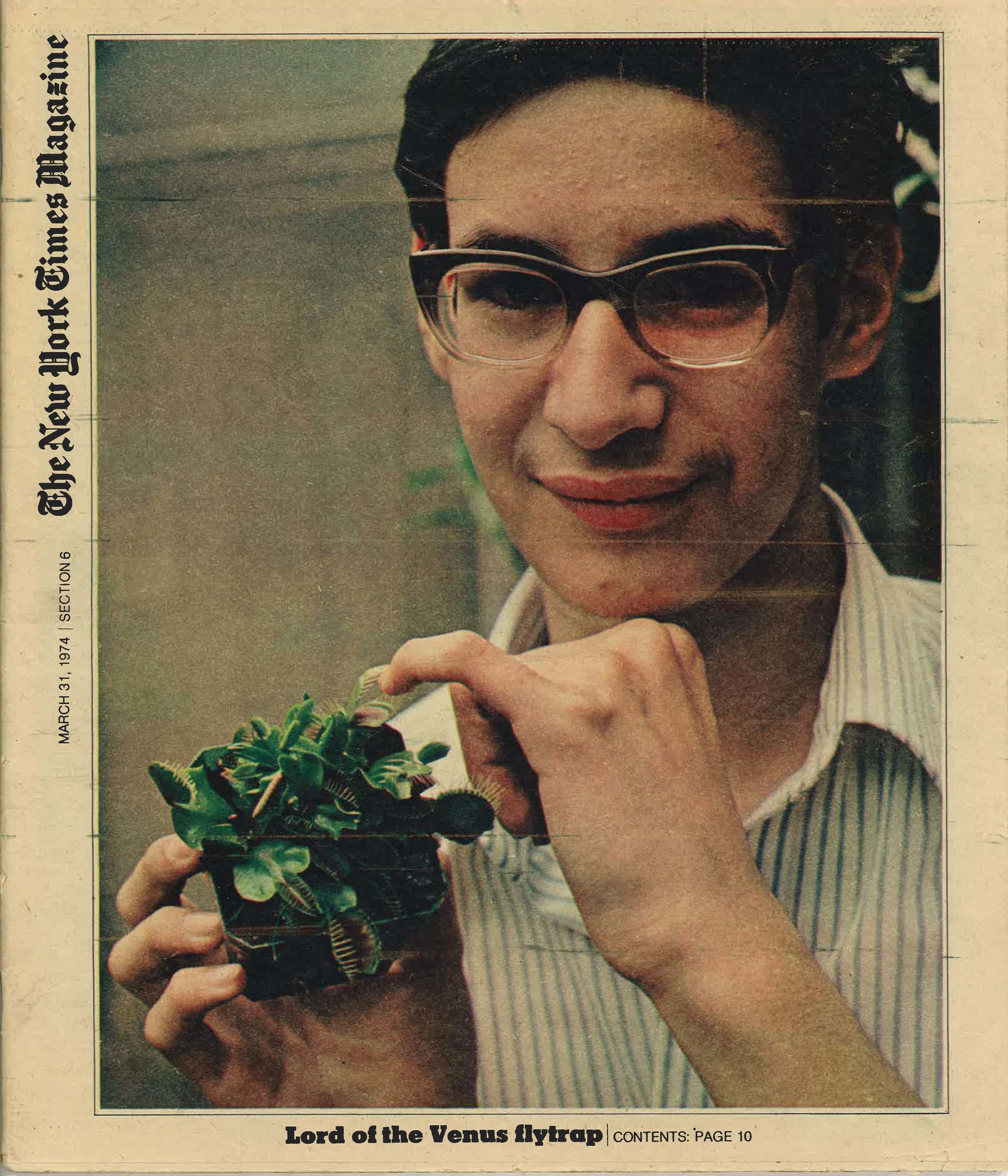
Figure 2. Cover of the New York Times magazine, Sunday March 31, 1974. "Lord of the Venus flytrap." The title of the article represented wordplay on a 1954 dystopian novel by Nobel laureate William Golding. The back pages of the magazine contained this crossword puzzle, by William Lutwiniak, edited by Will Weng (thanks to David Steinberg for tracking this down).
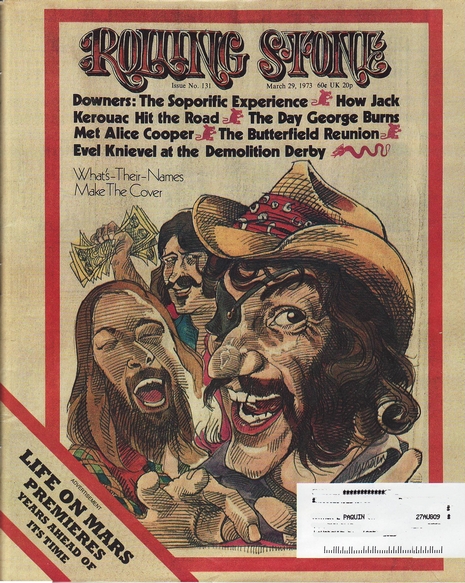
Figure 5. Cover of Rolling Stone, March 29, 1973, showing a caricature of the band Dr. Hook and the Medicine Show.
Parody Song from 1974
The Cover of the Times Magazine [hyperlink to an mp3 file of a 3-min song by George Barany, performed by George and Francis Barany]
Hey, Francis, tell them who you are ...
I'm a science whiz kid
I'm tall and skinny
And I'm loved everywhere I go (that sounds like me)
I think about fly traps and invent new puzzles
(At ten thousand dollars a show)
I shoot up every night
That's the reason I'm bright
But the brightest thing
That happened yet
Was the thrill that got me when I got my picture
On the cover of the Times magazine
(New York Times ...) Got to see my picture on the cover
(Times ...) Had to buy ten copies for my father
(Times ...) Gotta see my smilin' face
On the cover of the Times magazine (That's a good idea)
I got a loving mom name of no-nonsense Katy
Who will serve calculus for breakfast
I got my Ivory Tower daddy
Helping run the ultracentrifuge
I got a brother George who's my best friend
It was planned that way they say
And they've all helped and pushed me
So that now I'm famous on the cover of the Times magazine
(New York Times ...) Got to see my picture on the cover
(Times ...) Had to buy ten copies for my father
(Times ...) Gotta see my smilin' face
On the cover of the Times magazine
(Hey, I know how ...
Rock and roll...
(Ahh, that's beautiful)
I've got an awful sadistic history teacher
Who gave me an 80 last term
I've got Abe, Chairman of Science
Subscribing to theories of Terman
I've got all the friends that publicity will fetch
May the weather always be that fair
I'll try not to get bitchy now that I 've got my picture
On the cover of the Times magazine
(New York Times ...) Got to see my picture on the cover
(Times ...) Had to buy ten copies for my father
(Times ...) Gotta see my smilin' face
On the cover of the Times magazine
(I can see it now
Me on front
Smilin' man
Ahh beautiful)
This was a parody of the 1972 hit On the Cover of the Rolling Stone [link is to youtube, click here for wikipedia article], recorded by Dr. Hook and the Medicine Show, with lyrics written by the amazingly versatile Shel Silverstein; click here for a live version. Interestingly, the song preceded the group's actual appearance on the cover (see Figure 5). Our parody song was written by me, and I have the lead in the performance. Francis was game enough to provide the chorus.
Many of the words, be they accurate or not, were lifted directly from Ted Morgan's prose in the NYT magazine article. One outright inaccuracy: It was Mom, not Dad, who ran the analytical ultracentrifuge (but see this iconic family photograph).
The actual appearance of the article, and the weeks that followed, were surreal. Imagine 2 million people seeing your picture over their Sunday breakfasts. It was difficult to walk along First Avenue—then the locus for singles bars like T.G.I. Friday's and Maxwell's Plum—without being recognized (or misrecognized). Of course, Dad phoned from Chicago asking us to buy ten copies for himself. One way to relieve the pressure was to compose the parody song, inspired by a song then in circulation, that you can find in the adjacent column to this midrash, immediately underneath the legend to Figure 5.
The Times magazine received many letters riffing on the various themes brought up in the article, including one from eminent Hungarian-born psychiatrist Thomas Szasz, and the brilliant cartoonist Sidney Harris. Finally, Francis and I wrote a letter called "On Behalf of Themselves" that appeared seven weeks later. As for the Pulitzer Prize-winning (1961)_journalist formally known as Sanche de Gramont, he also had his say about some of the comments. The article jump started a new phase of his career, with several additional Times magazine articles, and then moving on to a whole series of well-received historical books and personal memoirs.
Pooh-Bah and Family Pride
In Gilbert and Sullivan's The Mikado, a pompous character named Pooh-Bah sings this. You've read above about the nuclear Barany family, and may be further amused by two more family photos (Figures 6 and 7). Finally, I should mention that 31 years after Francis, another Barany was selected as a finalist to go to Washington D.C. [by this time, the Westinghouse competition had been taken over by Intel].

